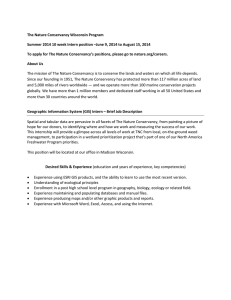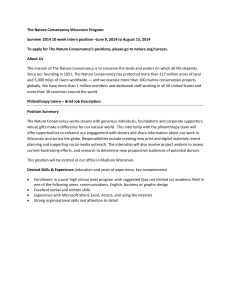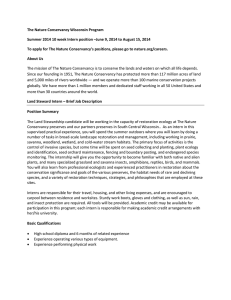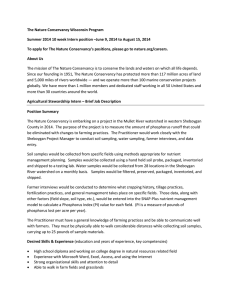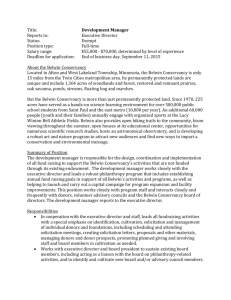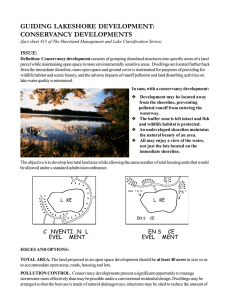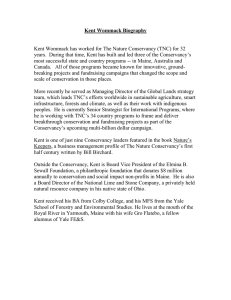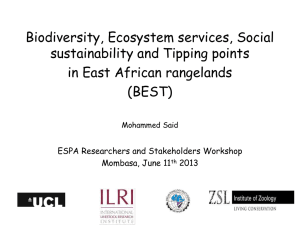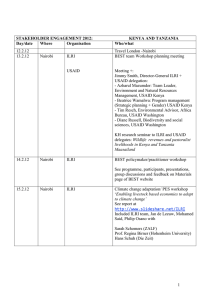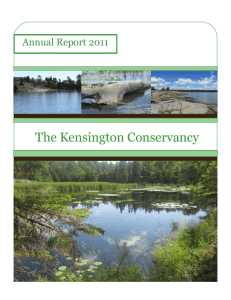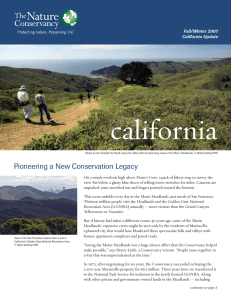BIODIVERISTY, ECOSYSTEM SERVICES, SOCIAL SUSTAINABILITY AND
advertisement
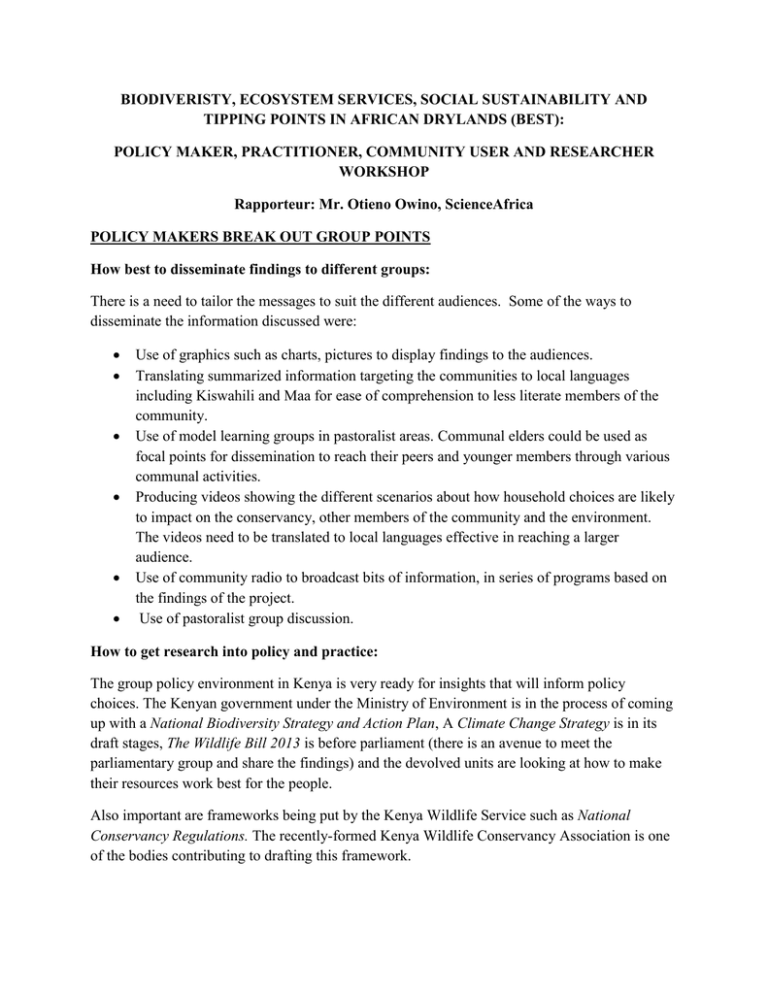
BIODIVERISTY, ECOSYSTEM SERVICES, SOCIAL SUSTAINABILITY AND TIPPING POINTS IN AFRICAN DRYLANDS (BEST): POLICY MAKER, PRACTITIONER, COMMUNITY USER AND RESEARCHER WORKSHOP Rapporteur: Mr. Otieno Owino, ScienceAfrica POLICY MAKERS BREAK OUT GROUP POINTS How best to disseminate findings to different groups: There is a need to tailor the messages to suit the different audiences. Some of the ways to disseminate the information discussed were: Use of graphics such as charts, pictures to display findings to the audiences. Translating summarized information targeting the communities to local languages including Kiswahili and Maa for ease of comprehension to less literate members of the community. Use of model learning groups in pastoralist areas. Communal elders could be used as focal points for dissemination to reach their peers and younger members through various communal activities. Producing videos showing the different scenarios about how household choices are likely to impact on the conservancy, other members of the community and the environment. The videos need to be translated to local languages effective in reaching a larger audience. Use of community radio to broadcast bits of information, in series of programs based on the findings of the project. Use of pastoralist group discussion. How to get research into policy and practice: The group policy environment in Kenya is very ready for insights that will inform policy choices. The Kenyan government under the Ministry of Environment is in the process of coming up with a National Biodiversity Strategy and Action Plan, A Climate Change Strategy is in its draft stages, The Wildlife Bill 2013 is before parliament (there is an avenue to meet the parliamentary group and share the findings) and the devolved units are looking at how to make their resources work best for the people. Also important are frameworks being put by the Kenya Wildlife Service such as National Conservancy Regulations. The recently-formed Kenya Wildlife Conservancy Association is one of the bodies contributing to drafting this framework. The various stakeholders need to be involved to ensure the policy making process is supported by the science findings. The following are some key points raised. Prepare concept papers and policy briefs based on the findings of BEST project. Target an inter-ministerial approach. The Ministry of Environment and Natural Resources is the key start point but other ministries such as Agriculture, Livestock and Fisheries, Tourism, could be presented with the policy briefs. Parliamentary committees dealing with legislation on environment should also be presented with these findings to inform policy choices and decisions. Devolved units comprising the governors, County Assembly representatives, County Executive members should be approached for dissemination with relevant information that will influence policy in specific counties. County conservancy platforms are other groups that will play an important role at the county level. It is important to note that the Tanzanian National Resource Forum (TNRF) has achieved significant results using such initiatives at the various levels of government, and has now been given a dedicated slot to contribute to parliamentary debates on drylands issues. Critiques: Participants questioned whether the research could be replicable to different areas and different situations. Modeling approach used makes some assumptions which need to be more clearly presented. Communal benefits through projects such as education, health care and water projects were not factored in. The project looked at the household income level which may not be the most important benefit of the conservancy in the views of the local communities.
